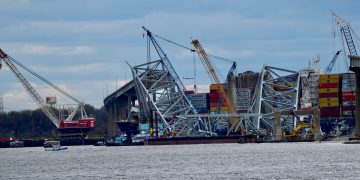In the worst case scenario of a fire onboard, crew members are required to act as professional firemen in a challenging environment, without any other assistance. Above all, the best fire prevention is a well-trained crew and fire drills aim at experience transfer between the crew in order to become able to recognize potential fire hazards.
As per SOLAS Chapter III Regulation 19, every crew member must participate in at least one fire drill every month on board. STCW, requires crew members to have passed the Basic Fire Fighting training Course (VI/1) and the head of fire fighting teams to have passed the Advanced Fire Fighting Course (VI/3). Following the model courses of IMO (1.20 and 2.03), a crew member attends a theoretical training and a practice training. As such, 10-12 hours of practice training is required by regulation while on board familiarization and training through drills is a must.
In essence, familiarization is part of every Safety Management System and is required in order each crew member boarding a ship to know how to use the fire fighting equipment and related systems. However, considering that fire fighting requires effective teamwork among crew members, the team’s performance and response is vital in the event of a fire emergency onboard.
A best practice guide
The following best practice may be used to conduct effective fire drills. The first two items are “NO GO” items for firefighting.
#1 Check for firefighting equipment condition and availability
The fire fighting equipment and systems (as all equipment/systems on board) should be readily available for use, in excellent working conditions, having passed all required maintenance stages at the required periods.
#2 Organize onboard firefighting
An effective Muster list is to be posted and all crew members to be informed for their position and duties during different emergency situations on board. The organizational structure of fire fighting teams should be applicable to ship type and systems used on board.
#3 Focus on Fire Drill planning
In order to be effective, the drill should be planned carefully. Time selection should be appropriate in order to achieve the maximum participation of the crew (covering the requirements of rest hours)
#4 Pre -drill Briefing is essential
The briefing should be conducted near the area of the drill to explain required actions by each participant. A quick equipment demonstration provides additional value to the briefing results.
#5 Select different Drill Areas each time
In many cases, Masters or Company’s representatives select the same areas for drills, i.e. fire drill in Galley is the most common. However, since fire hazards exist in all ship’s spaces, different areas should be selected for each drill. The best practice is to keep a specific list of areas of the ship’s four major areas (Accommodation, Cargo Area, Engine Room with adjacent compartments, Open Deck). In a 12-month period 3 different spaces from each major part should be used for drill execution.
#6 Set specific timeline
The drill is used to train seafarers to act as much closely to reality. In this respect a specific timeline has to be set. For example the Drill Announcement and Mustering has to achieve some minimum time frames. The deployment of the teams has to achieve another time frame etc. As it is already known, the first stages of fire (before full development) are critical for firefighting.
#7 A step by step monitoring and supervision is needed
The supervising officer (trainer) should guide the teams at all stages of deployment. Mistakes or omission to be noted and used at de-briefing session
#8 Post Drill Briefing (De-briefing) is essential
Having completed the drill, trainer should notify all participants for mistakes/omissions for improvement and lessons learned, but also he/she has to highlight the items that went accurately well during the drill to increase motivation and boost engagement.
#9 Don’t forget restoration of the area and all equipment
After the drill, all areas and equipment should be restored to the condition they were prior drill and ready for immediate further use. If breathing devises have been used with training air cylinders, then these cylinders should be replaced by other fully filled.
#10 Keep records each time
In order to have effective results and provide feedback to head office, all actions should be recorded while a complete drill evaluation report should be submitted. The minimum requirements for record keeping are:
- Response times
- Difficulties raised during drill
- Lessons learned
- Crew performance
- Proposals for improvement
Extra tip
The stage of preparation and training during drills is the appropriate clothing & uniforms’ use. Fireman outfit should be tried by all available crew members so that all of them be able to react.
Don’t forget!
Mariners should always conduct fire drills as if there is a real fire. That will better ensure a high level of preparedness in the event of an actual emergency.































































